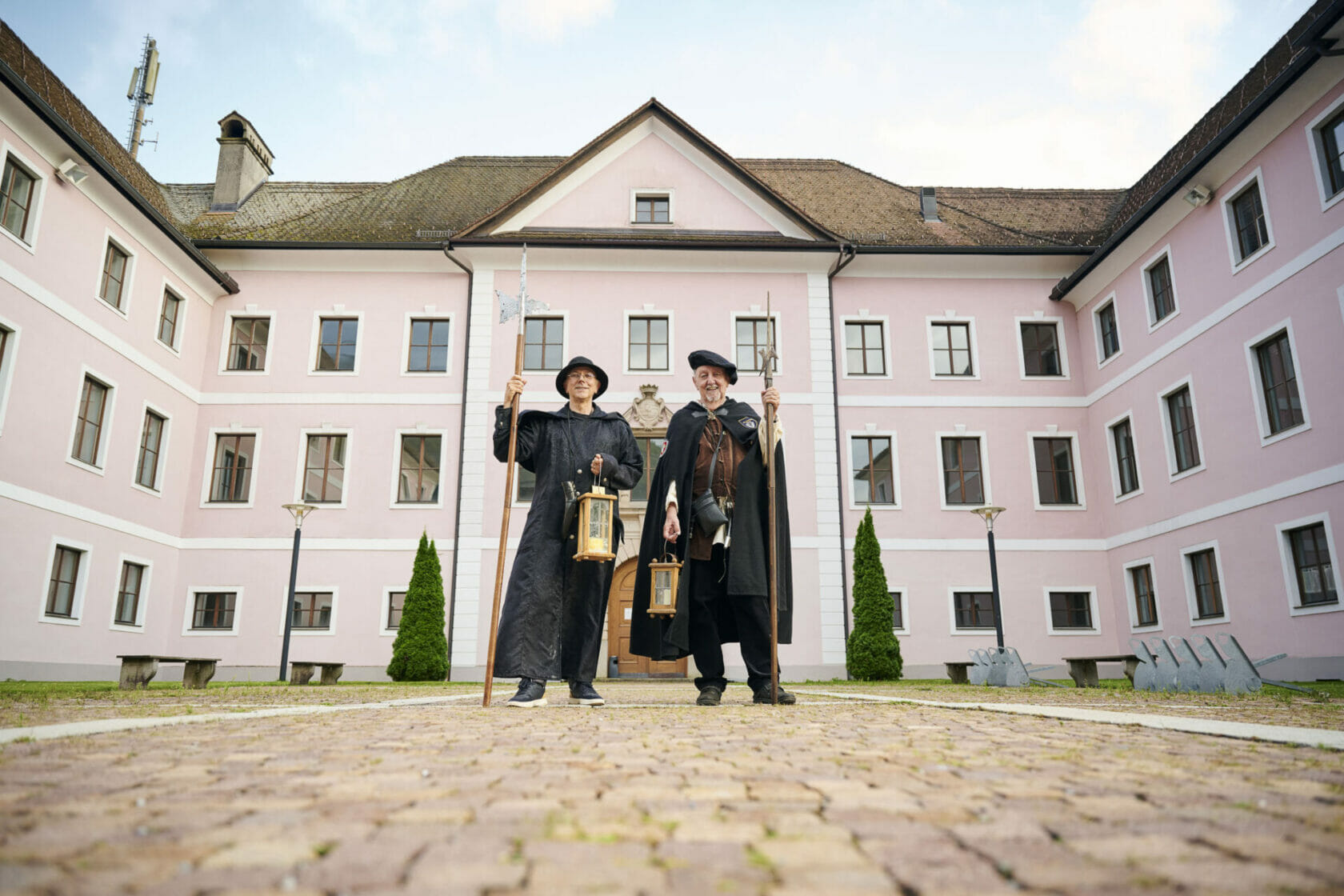St. Laurentius Church and Gayenhofen Castle
Visible from afar, the St. Laurentius Church and Gayenhofen Castle tower high above the old town of Bludenz. Together they form the landmark of the town of Bludenz. The church was first mentioned in 842. It has a distinctive onion tower and high altar made of black marble. The ringing consists of five bells, two of which are so valuable that they were not melted down in either of the two world wars. Since 1868, Gayenhofen Castle has housed the management of the Bludenz district administration. The listed building was once the seat of the Counts of Werdenberg, who ruled over the dominion of Bludenz. Both buildings can be visited as part of a guided tour of the town.
Hl. Kreuz Church
The Roman Catholic church, which is a listed building, was built between 1932 and 1934, consecrated and elevated to the status of a town parish church in 1939. The church was built with limestone and quartz from the Lorüns quarry and is equipped with a five-part peal (c’ – es’ – f’ – as’ – c”).
The Nepomuk Fountain
The Nepomuk fountain in the middle of the old town of Bludenz was built in 1730. The stone statue was designed by the Austrian sculptor Johann Ladner. The monument represents St. Nepomuk, who is considered the patron saint against slander and suspicion.
Monasteries in Bludenz
The Franciscan monastery in Bludenz was founded by the Capuchins in 1645. In 1991 Franciscans from the province of Poznan/Poland took over the monastery and since then have been supporting the parish and parishioners in many ways. Another monastery in Bludenz is the monastery of St. Peter. It is the oldest still existing monastery in Vorarlberg (founded in 1286), since 2002 Dominican nuns from Cazis (Switzerland) live there. As a guest, you can enjoy a stay in the monastery, turn inward and recharge your batteries for life.
Remise Bludenz
The supra-regional cultural center Remise Bludenz is located in the center of Bludenz. In addition to its varied program, it captivates with its unique architecture, which includes elements from traditional and modern parts of the building.

